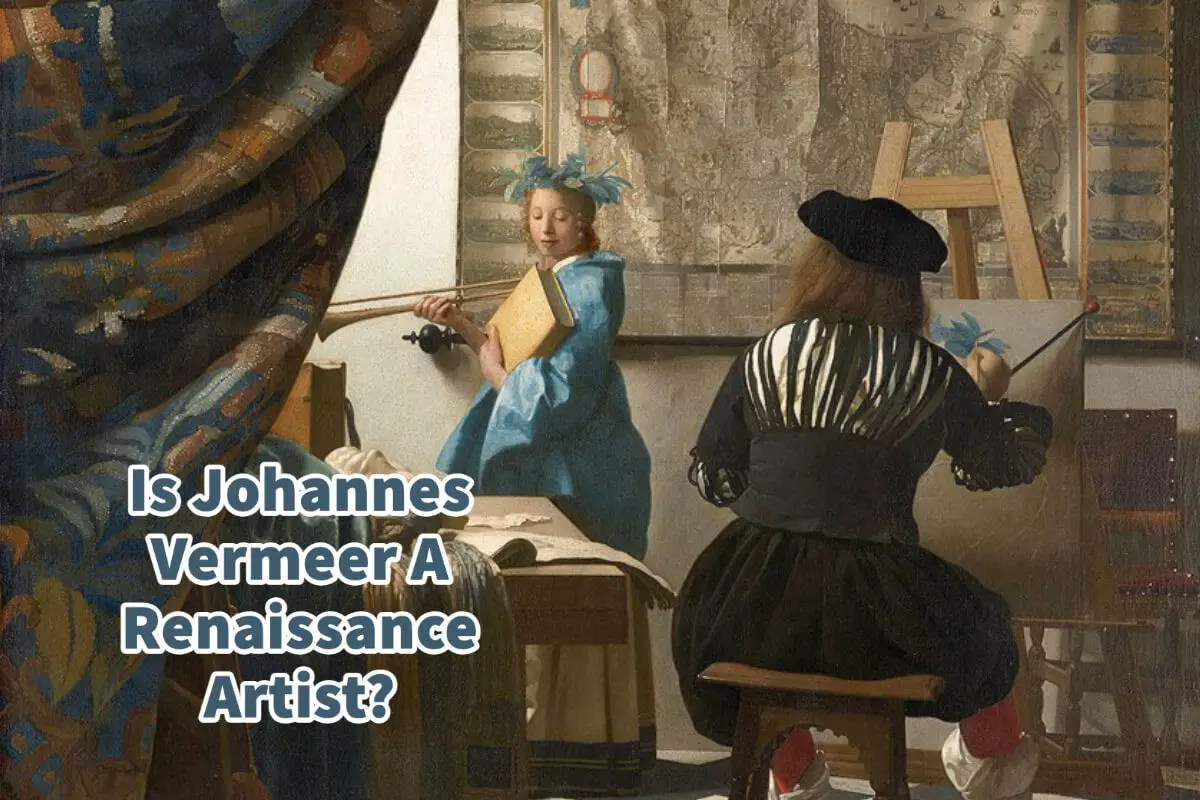Johannes Vermeer is often considered a Renaissance artist; it can be confusing about precisely what art movement he is part of.
Johannes Vermeer is not a Renaissance artist but is considered a Baroque artist. He is usually referred to as a Dutch Baroque artist and painter in the Dutch Golden Age Era. Johannes Vermeer’s paintings are not flamboyant like many of the Baroque painters but have a great sense of realism.
Table of Contents
- Johannes Vermeer Is Not A Renaissance Artist
- Johannes Vermeer Is A Baroque Artist
- Johannes Vermeer, A Dutch Golden Age Painter
- 10 Reasons Why Johannes Vermeer Is Revered as a Great Artist
- Frequently Asked Questions
- Related Questions
Johannes Vermeer Is Not A Renaissance Artist
Johannes Vermeer is not a renaissance artist. He was a painter who produced his art after the Renaissance era of art. Vermeer was painting in Holland in the 17th Century; many great Renaissance artists, such as Leonardo da Vinci, Raphael, and Michelangelo, lived in Italy in the 15th Century.

The Encyclopedia Britannia said this about the definition of Renaissance art:
“Renaissance art, painting, sculpture, architecture, music, and literature produced during the 14th, 15th, and 16th centuries in Europe under the combined influences of an increased awareness of nature, a revival of classical learning, and a more individualistic view of man.”
Encyclopedia Britannia
Johannes Vermeer was painting in the mid-17th Century. So he was not considered a Renaissance artist as he was painting after the period of the Renaissance art movement.
Johannes Vermeer Is A Baroque Artist
Johannes Vermeer is a Baroque Artist. Many technically call him a Dutch Baroque Artist. Like many other artists of his period, Johannes Vermeer never studied art in Italy but only studied art in Holland. Because he studied mainly in Holland and lived in Holland, he is usually referred to as a Dutch Baroque artist.
The Encyclopedia Britannia said this about the definition of Baroque Art:
“Baroque art and architecture, the visual arts and building design and construction produced during the era in the history of Western art that roughly coincides with the 17th century.”
Encyclopedia Britannia
Johannes Vermeer lived in the Baroque art era movement; the Baroque art movement was after the Renaissance art movement. Johannes Vermeer was born in October 1632 and died in December 1675, so he lived and died right in the heart of the 17th Century.
Johannes Vermeer, A Dutch Golden Age Painter
Johannes Vermeer is usually referred to as a Dutch Golden Age Painter. The Dutch Golden Age is a period of art that spans most of the 17th Century.
At this time, the new Dutch Republic was a prosperous European nation. The Dutch also led European trade, science, and the arts.
The 17th-century era marked a change in the art center for Europe and, in particular, Northern Europe. This area was the center of the European art world; the Netherlandish provinces make up the modern countries of present-day Luxembourg, Belgium, and Holland.
The artistic center’s traditional area was then in Flanders. During this time, there were changes in religion, particularly the once central authority of the Catholic church.
During the Dutch Golden Age, a sharp decline in religious subjects emerged as a new market for secular paintings emerged. Even though Dutch Golden Age painting is usually included in the European Baroque art movement, it also has some of its characteristics that are different than the Baroque movement.

Listen To Our Podcast About Who Is Johannes Vermeer? by clicking here.
Dutch Golden Age Painters And Realism
Most Dutch Golden Age painters lacked the idealization and love of the splendor that many other European artists had. The Dutch Golden Age painters were known to reflect art traditions of realism.
When you look at Johannes Vermeer’s paintings, you can see this sense of realism. His paintings come to life as we view life through his artistic eyes, including some daily tasks people did.
One of the things that makes Vermeer such a great artist in this era is that his paintings were at odds with a lot of the over-flamboyant Baroque art from the age he lived and worked. To many, Vermeer may have seemed like another Dutch Golden Age genre painter, but his artwork shows pure genius.
It took a long time for his genius to be discovered, and many do not know his name or story compared to other artists such as Rembrandt, Leonardo da Vinci, Raphael, or Michelangelo.
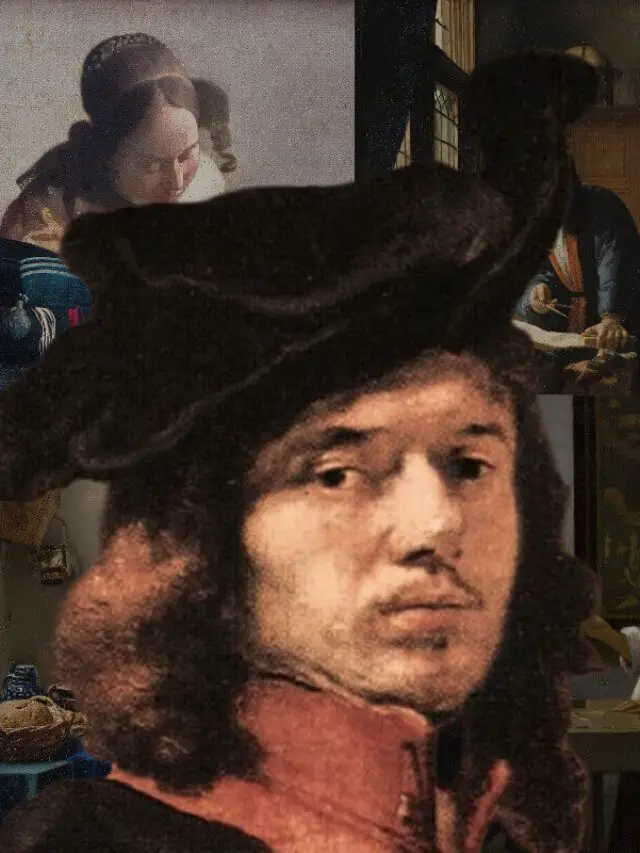
Johannes Vermeer is a painter who died without anyone acknowledging him as a great painter. He was not what many would call successful in his life, as when he died, he left his wife and children destitute.
Yet today, his painting of the Girl With A Pearl Earring is a well-known masterpiece and has even been in popular culture with a fictional version of the girl’s story in a 2003 film.
10 Reasons Why Johannes Vermeer Is Revered as a Great Artist
Johannes Vermeer, a master of Dutch painting, has captivated art lovers and critics alike for centuries. His works, characterized by their serene beauty and intricate detail, continue to resonate profoundly in the art world.
Here are ten reasons why Vermeer is celebrated as one of the great artists:
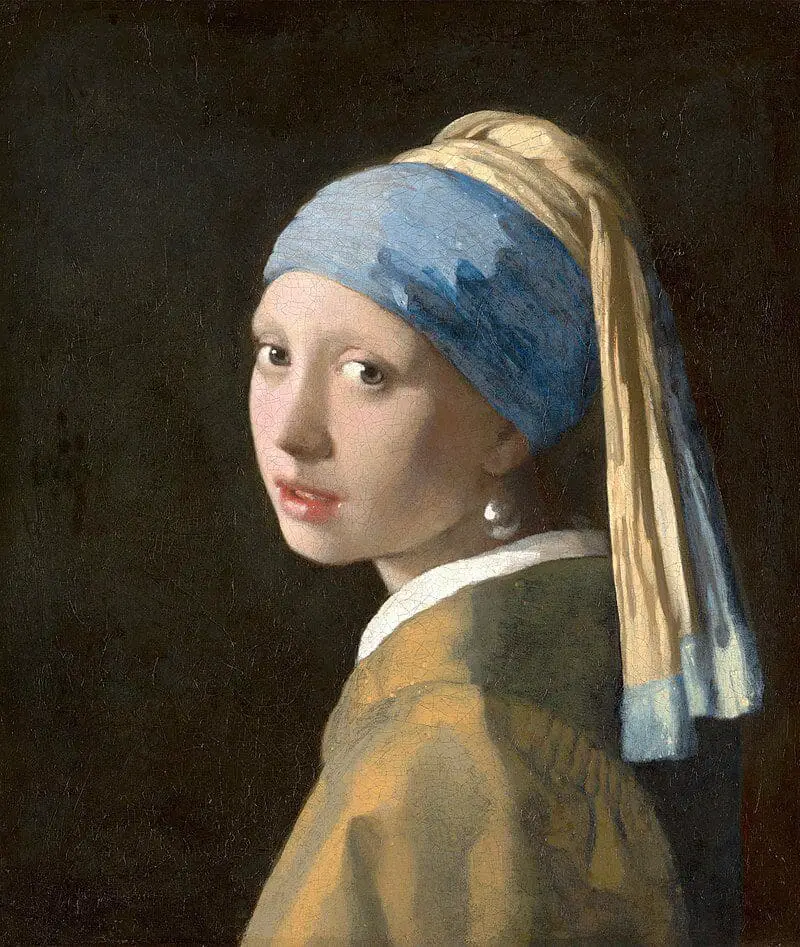
“The Girl with a Pearl Earring”:
Often referred to as the ‘Dutch Mona Lisa’, this iconic painting exemplifies Vermeer’s mastery in capturing human emotion and subtlety. The enigmatic expression of the girl, combined with the stunning depiction of the pearl earring, makes this artwork a timeless masterpiece.
Depictions of Delft:
Vermeer’s paintings of Delft, his hometown, are remarkable for their precise representation and atmospheric quality. Works like “View of Delft” showcase his ability to capture a place’s essence, making them paintings and visual narratives of 17th-century Dutch life.
Use of Light:
Vermeer’s use of light is nothing short of magical. He had an extraordinary ability to capture how light interacts with objects, imbuing his paintings with a luminous quality that feels real and ethereal.
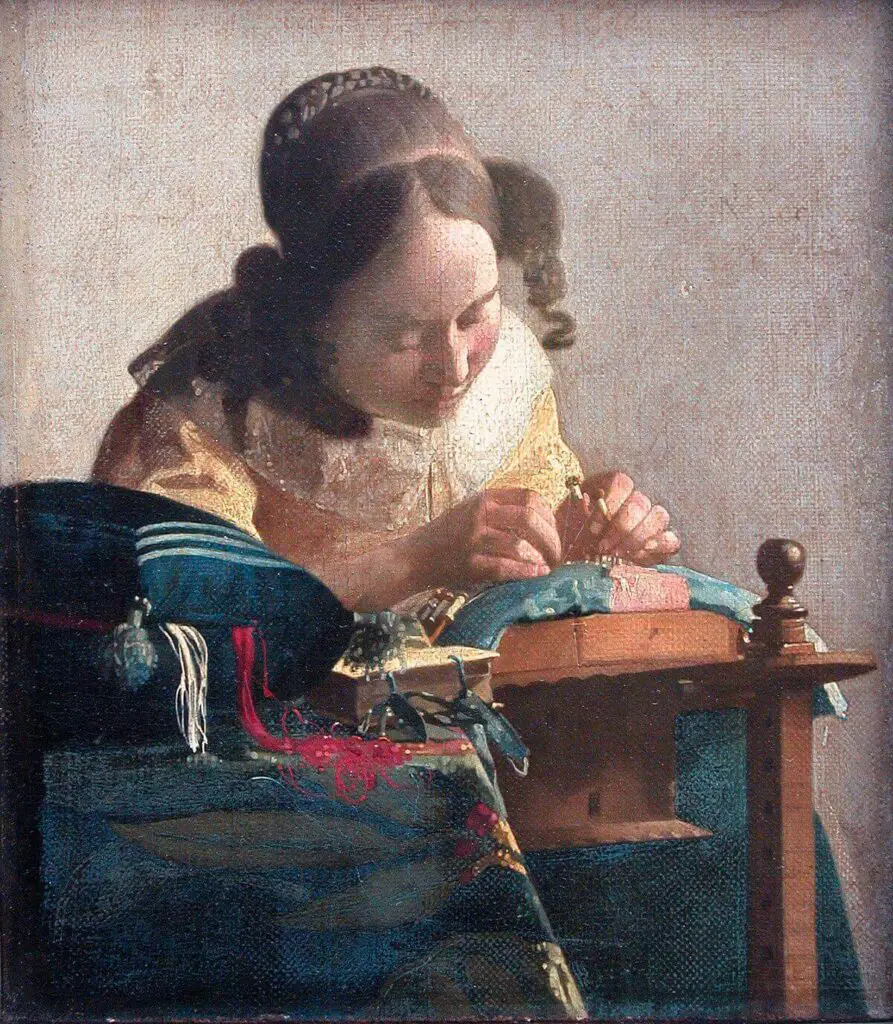
Attention to Detail:
Each Vermeer painting is a testament to his meticulous attention to detail. Whether it’s a garment’s delicate folds or a glass window’s reflective surface, his precision brings incredible realism to his work.
Intimate Domestic Scenes:
Vermeer’s genre paintings often depict quiet, intimate moments within domestic settings. This focus on everyday life offers a window into the Dutch Golden Age, presenting it with dignity and grace.
Vibrant Color Palette:
His use of color, particularly the rich blues and yellows, is another defining aspect of his work. His paintings’ vibrant yet harmonious color palette adds depth and emotion to his subjects.
Innovative Techniques:
Vermeer was known for his innovative techniques. His probable use of the camera obscura demonstrates a fusion of art and emerging optical technology, highlighting his forward-thinking approach.
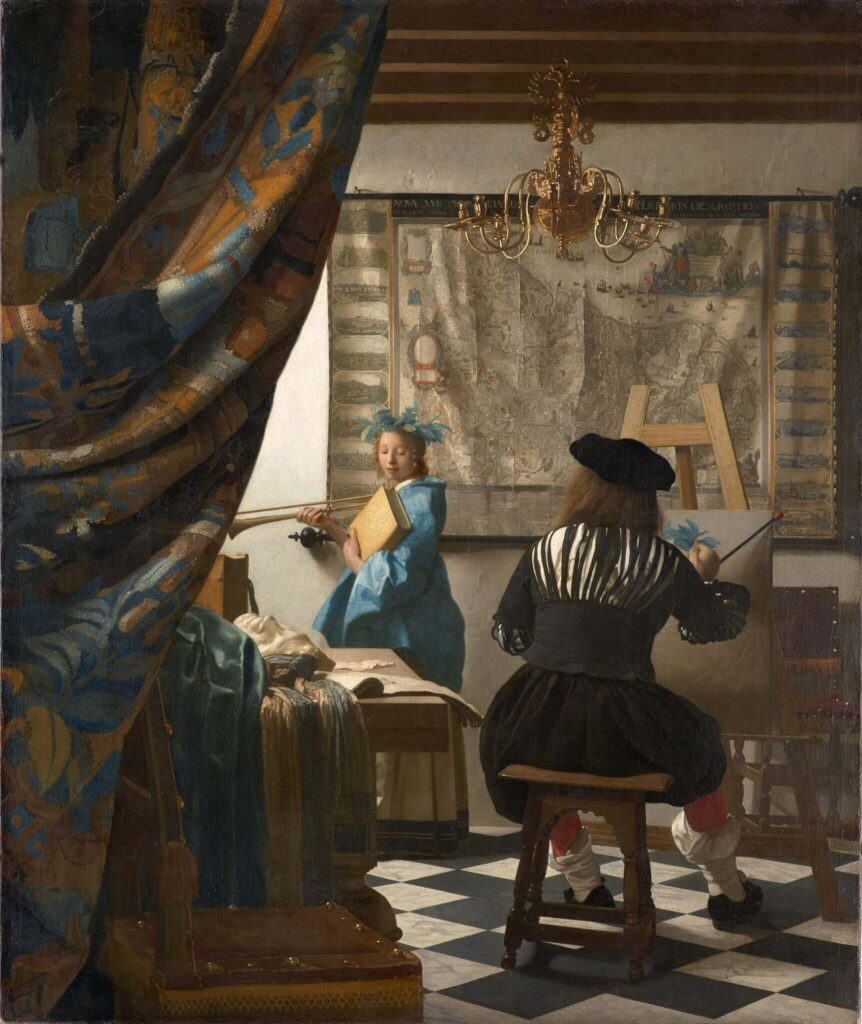
Narrative Quality:
Each of his works tells a story. Whether it’s a woman reading a letter or a milkmaid at work, Vermeer uniquely conveys narrative through still images, engaging the viewer’s imagination.
Psychological Depth:
Beyond the physical beauty of his paintings, Vermeer is adept at capturing the psychological depth of his subjects. His characters, often lost in thought, evoke a sense of introspection and emotional complexity.
Enduring Influence:
The influence of Vermeer’s work extends far beyond his lifetime. His ability to capture the beauty of ordinary life and his masterful technique continue to inspire artists and art enthusiasts, securing his place as a timeless figure in the world of art.
Anita Louise Art is dedicated to art education, great artists, and inspiring others to find and create their art. We love art that uplifts and inspires. #ArtToMakeYouSmile! #ArtToMakeYouHappy!
If you are interested to see any of my art, you can find out more by clicking here. If you are interested in what inspires me and my paintings, you can discover more by clicking here.
We have a free newsletter and would love you to be part of our community; you can subscribe to the newsletter by clicking here. If you have any questions, I would be happy to talk to you anytime. You can reach me, Anita, by clicking here.
Subscribe to our Anita Louise Art YouTube Channel with great videos and information by clicking here.
Frequently Asked Questions
Is Johannes Vermeer considered a Renaissance artist?
No, Johannes Vermeer is not considered a Renaissance artist; he is typically classified as a Baroque artist.
What distinguishes Vermeer’s art from Renaissance paintings?
Vermeer’s art is characterized by a realistic style and an emphasis on light, often depicting scenes of everyday life. This contrasts with the idealized and religious themes prevalent in Renaissance art.
Why is Vermeer sometimes confused with Renaissance artists?
Vermeer’s work shares some characteristics with Renaissance art, such as attention to detail and composition. However, his period and style align more closely with the Baroque era.
In which art movement is Vermeer commonly placed?
Vermeer is commonly placed in the Baroque art movement, particularly the Dutch Baroque, which emerged during the Dutch Golden Age in the 17th century.
How does Vermeer’s art differ from typical Baroque paintings?
While Baroque art is often associated with dramatic and dynamic compositions, Vermeer’s works are more subdued, focusing on domestic scenes with a high degree of realism.
Did Vermeer have any influence from Renaissance techniques?
Vermeer may have drawn inspiration from some Renaissance techniques, but his overall style and themes align more with the evolving trends of the Baroque period.
Were Vermeer’s paintings religious like those of Renaissance artists?
No, Vermeer’s paintings rarely depicted religious subjects. Instead, he focused on scenes from daily life, often capturing the quiet beauty of domestic settings.
How does Vermeer’s use of light compare to Renaissance artists?
Vermeer’s use of light is reminiscent of Renaissance techniques, but he often employed it to create a naturalistic and intimate atmosphere in his scenes, deviating from the more symbolic use of light in Renaissance art.
Did Vermeer have contemporaries who were Renaissance artists?
During Vermeer’s time, the Renaissance had largely passed, and artists like Leonardo da Vinci and Michelangelo belonged to an earlier period. Vermeer’s contemporaries were more influenced by Baroque styles.
What is Vermeer’s contribution to art during the Baroque era?
Vermeer’s contribution lies in his unique approach to realism and light within the context of the Baroque era. His paintings, though quieter than typical Baroque works, showcase a masterful use of technique and a keen understanding of the play of light and shadow.
Related Questions
Is Art An Natural Gift, Or Can Anyone Be Good At Art If They Practice?
Most artists have some natural gift or desire to be an artist. But iheir education, hard work, practice, and association with other artists take all the difference. Having a natural gift is the start of becoming an artist, but just having a natural gift will not make you a good artist. Becoming a great artist requires practice, education, and hard work.
By clicking here, you can learn more by reading Is Art An Natural Gift, Or Can Anyone Be Good At Art If They Practice?.
Artemisia Gentileschi And Breaking Gender Barriers In Art
In the 17th Century in Italy, women had two career choices: joining a convent and becoming a nun or wife and mother. The laws also dictated that the man in the women’s lives, such as their fathers, husbands, and even sons, would make all the decisions for their lives. Women during this time had very few rights.
By clicking here, you can learn more by reading Artemisia Gentileschi And Breaking Gender Barriers In Art.
What Is The Difference Between Unity And Harmony in Arts?
Harmony is about art that creates cohesiveness; it stresses the similarities but related parts in the work of art. Unity is a much broader term; unity is all about the different parts of the work of art that are separate but all work together as one. In other words, unity is all the parts working well together in art.
By clicking here, you can learn more by reading What Is The Difference Between Unity And Harmony in Arts?.

